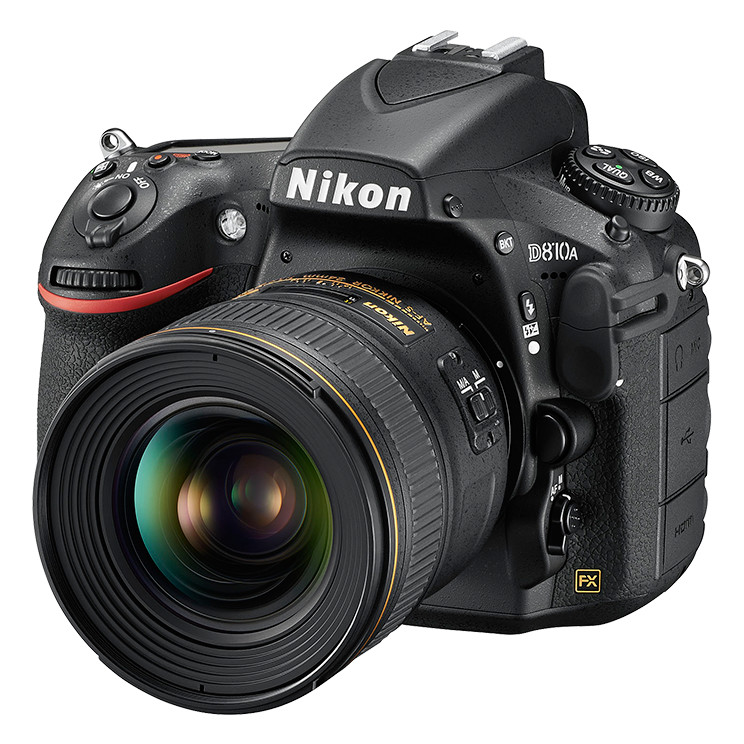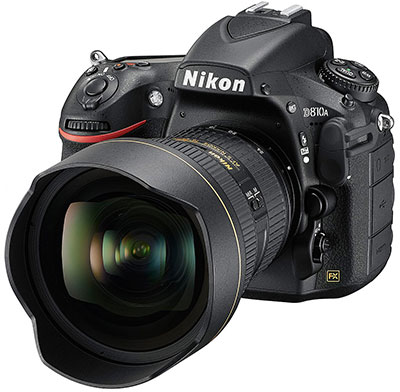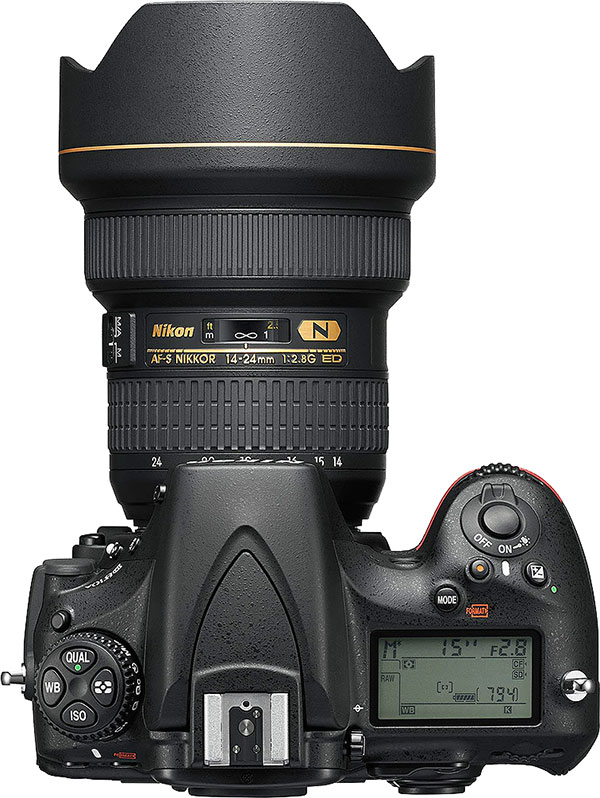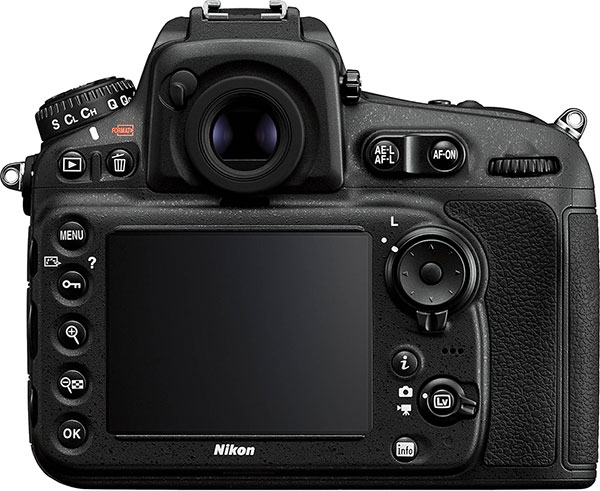Soheil_Esy
Fazanavard فضانورد
- Joined
- Apr 5, 2015
- Messages
- 744
- Reaction score
- 19
- Points
- 18
Nikon's first ultra high-definition model designed exclusively for astrophotography for capture of vivid reds in photos of nebulae that emit H-alpha light
February 10, 2015

Nikon Corporation is pleased to announce the release of the D810A, a Nikon FX-format digital SLR camera designed exclusively for full-scale astrophotography*.
The D810A is an ultra high-definition model that boasts the best image quality in the history of Nikon digital SLR cameras with an effective pixel count of 36.3-million pixels, a Nikon FX-format CMOS sensor with no optical low-pass filter, and the latest image-processing engine, EXPEED 4. It makes the most of the incredible rendering capabilities of the D810, while utilizing an optical filter adopted to enable beautiful reproduction of vivid reds in images of nebulae that emit H-alpha light , something very difficult with run-of-the-mill digital SLR cameras. The optical filter on the front surface of the image sensor is capable of four times greater transmission of H-alpha light than is that used with the D810. This enables clear and vivid reproduction of the strong red H-alpha light emitted by nebulae and galaxies.
D810A specifications have also been modified from those of the D810 to make astrophotography easier and more enjoyable. Modifications include the addition of a long-exposure manual (M*) mode that supports exposure times up to 900 s, and a live view preview function that makes focusing and composing images easier with display of a preview at a shutter speed of 30 s when an exposure time longer than 30 s is specified.
In addition, the D810A has inherited a number of functions from the D810 that are convenient for astrophotography, including the ability to enlarge the view through the lens displayed in the camera monitor during live view up to approximately 23x to facilitate accurate focusing, an electronic front-curtain shutter that thoroughly suppresses mechanical shake, and a continuous shooting function with no limit on the number of shots possible for creating beautiful star trails (apparent motion of stars around the Earth).
What's more, the use of genuine NIKKOR lenses with the D810A maximizes the camera's resolving power made possible with the high effective pixel count of 36.3-million pixels for enjoyable shooting that even lovers of astronomical photos will find more satisfying.
*The D810A is a digital SLR camera designed exclusively for astrophotography. When shooting under light sources with a significant amount of near-infrared wavelengths, or capturing common subjects exhibiting high reflectance at near-infrared wavelengths, resulting images may exhibit an unusually red cast. Because an appropriate color reproduction cannot be obtained, this model is not recommended for general photography.
http://www.nikon.com/news/2015/0210_dslr_01.htm
February 10, 2015

Nikon Corporation is pleased to announce the release of the D810A, a Nikon FX-format digital SLR camera designed exclusively for full-scale astrophotography*.
The D810A is an ultra high-definition model that boasts the best image quality in the history of Nikon digital SLR cameras with an effective pixel count of 36.3-million pixels, a Nikon FX-format CMOS sensor with no optical low-pass filter, and the latest image-processing engine, EXPEED 4. It makes the most of the incredible rendering capabilities of the D810, while utilizing an optical filter adopted to enable beautiful reproduction of vivid reds in images of nebulae that emit H-alpha light , something very difficult with run-of-the-mill digital SLR cameras. The optical filter on the front surface of the image sensor is capable of four times greater transmission of H-alpha light than is that used with the D810. This enables clear and vivid reproduction of the strong red H-alpha light emitted by nebulae and galaxies.
D810A specifications have also been modified from those of the D810 to make astrophotography easier and more enjoyable. Modifications include the addition of a long-exposure manual (M*) mode that supports exposure times up to 900 s, and a live view preview function that makes focusing and composing images easier with display of a preview at a shutter speed of 30 s when an exposure time longer than 30 s is specified.
In addition, the D810A has inherited a number of functions from the D810 that are convenient for astrophotography, including the ability to enlarge the view through the lens displayed in the camera monitor during live view up to approximately 23x to facilitate accurate focusing, an electronic front-curtain shutter that thoroughly suppresses mechanical shake, and a continuous shooting function with no limit on the number of shots possible for creating beautiful star trails (apparent motion of stars around the Earth).
What's more, the use of genuine NIKKOR lenses with the D810A maximizes the camera's resolving power made possible with the high effective pixel count of 36.3-million pixels for enjoyable shooting that even lovers of astronomical photos will find more satisfying.
*The D810A is a digital SLR camera designed exclusively for astrophotography. When shooting under light sources with a significant amount of near-infrared wavelengths, or capturing common subjects exhibiting high reflectance at near-infrared wavelengths, resulting images may exhibit an unusually red cast. Because an appropriate color reproduction cannot be obtained, this model is not recommended for general photography.
http://www.nikon.com/news/2015/0210_dslr_01.htm
Nikon D810A Review -- First Impressions
02/09/2015
While Canon seems to have taken a page from Nikon's playbook with its twin versions of the 5DS and 5DS R (one with and without an anti-aliasing filter) like the D800 and D800E, Nikon's now using one from Canon's. Enter the Nikon D810A, a new astrophotography-specific variant of the 36.3-megapixel, full-frame D810.

Similar to the astrophotography version of Canon's popular 60D -- the Canon 60Da -- the D810A take a similar approach in that the camera includes a modified version of the infrared cut filter that sits atop the image sensor. The D810A's special IR cut filter has been been specially tweaked to allow for better transmittance of the hydrogen alpha wavelength -- in other words, greater sensitivity of the 656 nanometer wavelength of light, according to Nikon -- which will help the camera capture more of the red hues of far-off nebulae and constellations than the standard D810 can.
Given the specialized nature of this modified IR cut filter, Nikon does not recommend using the D810A for general-purpose photography -- although, you'd be more than welcomed to, just be ready for the reddish cast in the resulting photos.
Apart from the new IR cut filter, the Nikon D810A is mostly identical, both physically and technologically, to the standard D810 model, although there are a couple of firmware changes. The D810A utilizes the same 36.3-megapixel, full-frame CMOS sensor paired with the fast EXPEED 4 image processor, as well as the sturdy magnesium alloy body, vibration-reducing mirror mechanism, optional electronic first-curtain shutter, and the bright 1,229K-dot, 3.2-inch LCD screen.

The firmware changes to the D810A are, naturally, related to its astrophotography focus. The D810A includes a new Long Exposure Manual Mode, which provides an increased range of slow-to-very-slow shutter speeds. Whereas a normal D810 offers just 30 seconds as the slowest shutter speed (apart from using Bulb or Time mode), the D810A can be cranked to 60s, 120s, 240s, 300s, 600s and finally to a maximum of 900s, which is a whopping 15 minutes. Hello star trails...if you're not using a motorized equatorial mount!
In addition to the longer shutter speeds, Nikon has also introduced a new Virtual Exposure Preview Mode that's available when using shutter speeds longer than 30 seconds in Live View mode. This preview provides for an estimated exposure using a brightened 30s shot to help simplify focusing and composition. Presumably, this virtual preview is done before you begin capturing your real image, and is used for adjusting camera position, focal length and exposure settings, among other settings.

The ISO sensitivity range has also been tweaked over the standard model. The D810 brought the native base ISO down to 64, but with the D810A, its lowest native ISO is raised to 200 -- the maximum boosted ("Hi-2") ISO remains at 51,200, and its expanded low ISO is now 100. Further tweaks include a red-colored virtual horizon indicator and the brightness of the OLED info display at the bottom edge of the viewfinder can be reduced.
Along with the new Nikon D810A, the camera's bundled software, Capture NX-D, will also be updated with a new Astro Noise Reduction option for D810A image files.
This specialized DSLR, aimed at hobbyist and professional astrophotographers as well as for other scientific applications, is set to be available in late May 2015 with a list price of US$3799.95, about a $500 premium over the standard version's price at introduction.
http://www.imaging-resource.com/PRODS/nikon-d810a/nikon-d810aA.HTM
